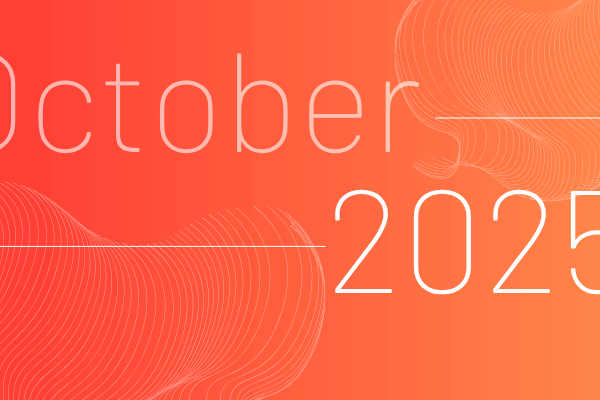
Building a product roadmap that meets both current and future needs is a dynamic process. At our recent fireside chat, our leadership team discussed the intricacies of this task, sharing valuable lessons and strategies from their field experiences. Here’s an in-depth look at how we approach building a product roadmap.
Gathering Insights from Customer Visits
One of the foundational steps in developing our product roadmap is gathering insights directly from our customers. As Ken Kimura, Director of Product Development, emphasized, “We go out and we see our customers a lot. It’s really important that we do that.” This hands-on approach allows us to observe our customers in their environments, understand their unique challenges, and identify opportunities for improvement.”
Real-world feedback is invaluable in ensuring that our products are not only functional but also truly beneficial to those who use them. Ken continued, “By seeing firsthand the common challenges faced by multiple customers, we identify a need for a solution that directly addresses their pain points.”
Prioritizing Features Based on Customer Feedback
Once we gather insights, the next step is to prioritize the features we develop. This process involves a lot of dialogue and deliberation with our customers. As Robert Gray, Chief Revenue Officer, highlighted, “We go through a voting process to find out if you could only have five things, what are the most important five things?” This method ensures that we focus on features that will have the most significant impact.
By engaging with Special Interest Groups (SIGs) composed of our customers, we can validate the need for new applications or functionalities. These groups help us understand the minimum viable product that will be valuable, allowing us to start with a strong foundation and build from there.
Balancing Immediate Needs with Long-Term Goals
Balancing immediate needs with long-term goals is a critical aspect of our roadmap development. As Robert mentioned, “We have to take care of what our customers have right now, like what they’re using in terms of stability. We have to make sure that the system is stable, it’s secure, it’s scalable because we’re talking about enterprise companies that span in some cases hundreds of locations, thousands of users.”
Ensuring the stability and security of our existing systems is paramount because our customers rely on these as their core business systems.
At the same time, we keep an eye on future innovations and industry trends. This dual focus allows us to explore exciting new features and technologies, such as AI and predictive analytics, without losing sight of our commitment to current customers. By addressing immediate needs and planning for future growth, we can create a roadmap that supports both short-term success and long-term advancement.
Real-World Applications in the Construction Industry
The construction industry presents unique challenges that our roadmap aims to address by focusing on enhancing the experience for various user roles within a company. As Ken Kimura explained, “Are they a dispatcher who is taking in a lot of information to make decisions, or are they a driver who’s working on the side of a freeway? Whatever we design for them, whatever workflow we build, doesn’t just meet the business requirement, it’s safe for our users.”
By prioritizing these role-specific insights, we developed features that automate routine tasks, provide intuitive interfaces, and ensure safety and efficiency for all users. For instance, dispatchers benefit from tools that streamline decision-making processes, while drivers get applications that are easy to use even in challenging environments.
This focus on the end user ensures that each role within a company can perform their tasks more effectively, leading to improved overall productivity. Our roadmap addresses these specific needs, making the end users’ lives easier, safer, and more efficient.
Involving User Groups for Continuous Improvement
A key element in our approach to building the roadmap is the involvement of user groups. These groups consist of diverse users from various roles within the construction industry who collaborate to optimize their use of the product, enhance efficiency, and suggest improvements and enhancements. By sharing their insights and feedback, these user groups play a crucial role in shaping our product development.
We believe that the best ideas for future enhancements come directly from our clients. To facilitate this, we have implemented a system where clients can share their feature requests and improvement suggestions. Through platforms like our Feature Request Form, clients can submit their ideas, which are then reviewed and prioritized based on the overall impact and feasibility.
For example, clients have suggested enhancements such as more intuitive mobile interfaces for field workers, improved reporting capabilities for project managers, and advanced inventory tracking features. By incorporating these suggestions, we aim to create solutions that are closely aligned with the day-to-day needs of our users.
Conclusion: A Roadmap Philosophy Centered on the End User
At Wynne Systems, our roadmap philosophy centers on the end user. By actively engaging with customers through visits, feedback sessions, and Special Interest Groups (SIGs), we gather invaluable insights that shape our development process. This hands-on approach ensures that our solutions address real-world challenges, making our products both practical and beneficial. We balance immediate needs with long-term goals, incorporating innovative technologies like AI and predictive analytics to drive continuous improvement.
As Ken Kimura emphasized, “We always observe our customers to understand what are their challenges today. Are there things we can solve and the things that we can’t solve that we might be able to solve down the line?” By prioritizing customer feedback and involving user groups, we foster a strong partnership, ultimately delivering solutions that make users’ lives easier, safer, and more productive, thereby driving more revenue and profit for our clients.




